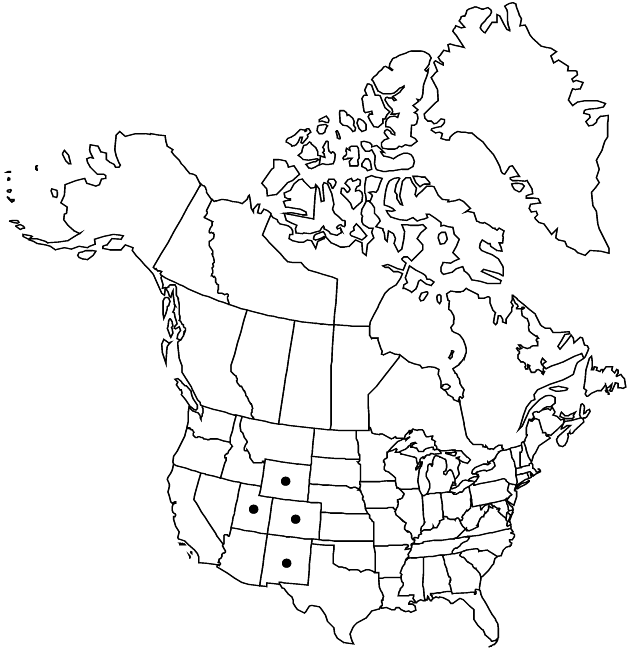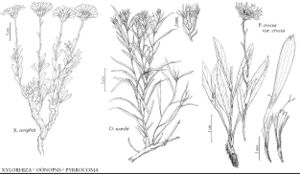Difference between revisions of "Pyrrocoma crocea var. crocea"
Treatment appears in FNA Volume 20. Treatment on page 417.
FNA>Volume Importer |
imported>Volume Importer |
||
| (One intermediate revision by the same user not shown) | |||
| Line 42: | Line 42: | ||
|publication year= | |publication year= | ||
|special status= | |special status= | ||
| − | |source xml=https:// | + | |source xml=https://bitbucket.org/aafc-mbb/fna-data-curation/src/2e0870ddd59836b60bcf96646a41e87ea5a5943a/coarse_grained_fna_xml/V19-20-21/V20_956.xml |
|tribe=Asteraceae tribe Astereae | |tribe=Asteraceae tribe Astereae | ||
|genus=Pyrrocoma | |genus=Pyrrocoma | ||
Latest revision as of 21:06, 5 November 2020
Plants 30–60(–80) cm, usually robust. Stems erect. Basal leaves 100–450 × 20–60 mm. Heads usually borne singly, sometimes 2–3. Involucres 15–20 × 20–60 mm. Ray corollas 13–30 mm. 2n = 12, 24.
Phenology: Flowering Jul–Oct.
Habitat: Moist, alkaline meadows, openings in pine forest
Elevation: 1900–2800 m
Distribution

Colo., N.Mex., Utah, Wyo.
Discussion
Variety crocea has the largest and most attractive heads in the genus and is often used as an ornamental.
Selected References
None.
Lower Taxa
None.
